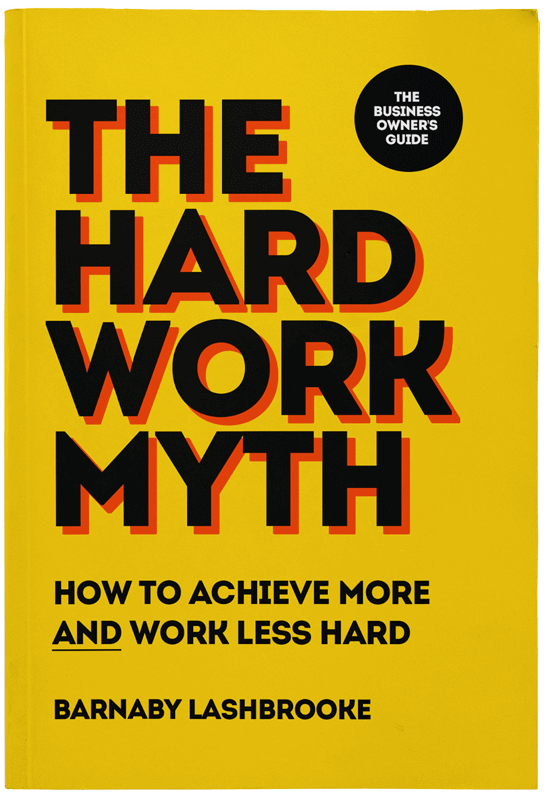If you ask a dozen different founders what it takes to succeed, you’ll probably get a dozen different answers. Some will say it’s all about having the next big idea. Others might say it’s timing, talent, or even luck. But there’s one thing just about everyone agrees on: staying motivated is absolutely essential.
It's no secret that running your own business is a completely different world from working for someone else. You’re in the driver’s seat, and everything depends on you. The freedom to call the shots is amazing, but on the flip side, there’s no one looking over your shoulder to keep you on track. That means it’s up to you to stay focused and do what needs to be done to keep moving forward.
That's why motivation is so important for founders, but the thing is, motivation isn't one-size-fits-all. In fact, it comes in many different forms.
So if you’ve been feeling stuck or uninspired lately, it might just be time to try a new approach. When you understand the different types of motivation, you can figure out what works best for you to show up consistently and keep pushing through, even when times get tough.

The different types of motivation
We’re all driven by different things, but most types of motivation fall into one of two categories: intrinsic or extrinsic.
Intrinsic motivation comes from within. It’s that sense of satisfaction you feel when you’re doing something just because you enjoy it or it feels meaningful to you.
On the other hand, extrinsic motivation comes from outside influences like chasing a reward, recognition, or even avoiding a negative consequence.
Now, let’s break it down even further.
Physiological motivation
At the heart of it all, we’re wired to survive. It might not be something we think about every day, but this instinct plays a huge role in what drives us; whether it’s grabbing a snack when we’re hungry, seeking shelter when it’s cold, curling up for rest when we’re exhausted, or steering clear of danger.
Psychologist Abraham Maslow explained this in his hierarchy of needs theory. He suggested that once our most essential needs—like food, safety, and rest—are taken care of, we naturally start looking to meet other needs, like connection, purpose, and growth. In other words, once we feel safe and secure, we can focus on what helps us thrive, not just survive.
Achievement motivation
If you’ve got a bit of a competitive streak or love the feeling of hitting a goal, you’re probably powered by achievement motivation. It’s less about physical prizes or money, and more about the win itself.
For people driven this way, the real reward is that sense of accomplishment. It’s the pride that comes from doing something well, topping the leaderboard, or hearing “great job” from someone they respect. It’s about pushing yourself, aiming high, and feeling that buzz when your hard work pays off.
Attitude motivation
This form of intrinsic motivation is all about changing the way you or others think and feel.
A great example of this is motivational speakers. What really drives them is a deep desire to help others see things differently; to boost someone’s confidence, shift their mindset, and inspire a more positive outlook on life.

Competence motivation
This is that inner spark that pushes you to grow, learn, and improve—not because you want to outshine others, but because you genuinely enjoy the process of getting better at something.
It’s different from the urge to win or be the best. Instead, it’s about curiosity, self-improvement, and that satisfying feeling of progress. Maybe you spend your evenings practicing a hobby you love, diving into books about a topic that fascinates you, or taking extra training to deepen your skills at work. That’s competence motivation in action.
Sure, earning a new qualification might eventually lead to a promotion, but that’s not the main goal here. It’s the learning itself, the mastery, and the sense of personal growth that really drives you.
Incentive motivation
Incentive motivation is one of the most familiar—and often most powerful—forms of extrinsic motivation.
At its core, it’s all about the promise of a reward. It taps into the basic human desire to feel that our efforts are worth something. Whether it’s a bonus at work, a gift for reaching a milestone, or even something as simple as treating yourself to your favorite dessert after finishing a big task, the idea is the same: complete the task, earn the prize.
But of course, not all rewards are created equal, and the effectiveness of incentive motivation really depends on the individual and how much they personally value the reward being offered. For some, a little recognition or praise might be enough to go the extra mile. For others, it might take something more concrete, like a raise or a day off.
Fear motivation
If incentive motivation is the carrot, fear-based motivation is the stick.
At its core, it’s about wanting to avoid a negative outcome. While it might sound a bit harsh at first, it’s not always as bad as it sounds.
Sometimes, the pressure of not wanting to let someone down—or not wanting to fail—can actually help us stay focused and accountable. So for many leaders, this kind of motivation shows up as a strong sense of responsibility. It’s what helps us follow through on our goals, push past procrastination, and get things done, even when we don’t feel like it.
That said, it’s important to keep this kind of motivation in check. If fear is your main driver, it can open the door to stress, anxiety, and even burnout over time. It’s totally normal to feel that push now and then, but ideally, it should work alongside more positive forms of motivation—not replace them.
Power motivation
Those who want nothing more than to change the world are bound to have high levels of this type of extrinsic motivation.
Let’s be honest, when you think of someone driven by power, your mind might jump to very different examples. On one hand, you may think of inspirational forces for good, such as Martin Luther King Jr.—a humble Baptist minister to civil rights legend and the youngest recipient of the Nobel Peace Prize at the time it was awarded in 1964.
On the flip side of the coin, history has also shown us how the pursuit of power can be greatly misused.
But power motivation isn’t always about ego, control, or personal gain. At its best, it’s about stepping up, leading with purpose, and having the drive to leave a lasting mark. Whether it’s guiding a team to success, shaping an industry, or being a voice for change, this type of motivation can be a powerful force for leadership, growth, and positive impact.
Affiliation motivation
Humans are social creatures by nature, and so affiliation motivation is all about connection. It’s the drive to fit in, be accepted, and meet the expectations of those around us.
This type of motivation often shows up in subtle but powerful ways. Maybe you feel energized and inspired after chatting with industry leaders at a networking event. Or perhaps you join your colleagues for after-work drinks—not necessarily because you’re craving a cocktail, but because you don’t want to miss out on bonding moments or be left out of the loop. That’s affiliation motivation in action.

How to keep your own motivation level topped up
Sometimes, even when we're pursuing our passions, summoning the strength to knuckle down can be tougher than we'd like to admit.
Knowing your motivation style is a good start, but now, here are some useful techniques that span both intrinsic and extrinsic motivation to help you push forward:
- Know your “why”: Why have you set your goals in the first place? Why are they important to you? Why should you keep going? If you can't answer these questions and you don’t have a strong connection to your goals, there’s nothing to keep you on track when things get tough.
- Find your trigger: Your “why” is crucial, but a “what” can be pretty handy, too. Each of us has something that helps us get in the zone, or start our brain cogs turning. Personally, my go-to is watching an inspiring TED Talk, but yours could be just about anything. Whether it’s an empowering podcast, a playlist of your favorite music, or a chapter of an inspiring book, it’s worth having a trigger in reserve ready for those times when you need a pick-me-up.
- Set small, regular goals: Think about the short- and long-term objectives you’ve set for your business. The thought of the future satisfaction you’d feel from achieving something in a year’s time might not be enough to motivate you in the present, so break them down into a series of smaller, easily digestible goals. Then, set one for yourself every day or week. When the feeling of accomplishment or the satisfaction of achieving a small win is always close at hand, you’ll find it easier to make it happen.
- Body-double: No, not the Hollywood kind! If you find yourself struggling to start or follow through on tasks, body doubling—doing a task in the presence of another person—could be your answer. In the same way that students choose to study in the library with other quiet, focused individuals, chances are you’ll find it easier to get things done working alongside someone else who is working hard. You’re holding yourself accountable to that person, you want to fit in with them by matching your behavior to theirs, and you don’t want to let them down by getting distracted or straying off-task. If nothing else, having some company may make an otherwise boring task more enjoyable.
- Bounce off others: If you’re stuck in a rut and no matter how hard you try, work isn’t flowing, try speaking to others—even just for a few minutes. Schedule a brainstorming session with your team, discuss solutions to problems with a co-worker, or ask a friend for some advice. Recent research has shown that social interaction involving discussion of a common topic produced short-term cognitive benefits similar to those gained from brain-training games. Don’t see it as slacking off, you’re actually warming up your mental muscles!
- Celebrate your achievements: Not just for those who are primarily incentive-motivated, you should never underestimate the power of a small reward. So for both big achievements and small wins, make sure you have a way of celebrating them afterward. Choose something that’s meaningful to you and that you know you'll enjoy; it just might be the boost you need.
What’s the bottom line?
Motivation matters because it directly impacts your productivity and long-term success.
Without motivation, even the best plans can fall apart. When things get tough (and let’s face it, they always do at some point), it’s motivation that helps you overcome obstacles instead of giving up. It’s the difference between pushing through a hard day and throwing in the towel.
That’s why understanding what drives you is so important. When you know what actually lights that fire—whether it’s growth, recognition, purpose, or something else—you can lean into it and use it to your advantage.
Instead of relying solely on willpower, you tap into something deeper and more sustainable. And that’s when things really start to click.
So if you’re serious about reaching your goals, don’t just focus on what you’re trying to achieve. Take time to understand why you’re doing it, and let that motivation be the steady engine that drives you forward on your entrepreneurial journey.










